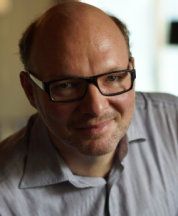By Jean-Paul Munsch for Enlivening Edge Magazine
The bureaucratic paradigm in which our current educational system is rooted has brought us far. We (almost) all learned reading, writing, and calculating in the industrial complex societies. So far, so modern.
Let’s appreciate that for a second, and look behind the school bashing which is easily done and that is so en vogue–and that I was about to start. There was and still is a Purpose behind this huge machinery. The Purpose is “no child left behind”, to use a political claim. The Purpose requires that in today’s learning factories of schools, the routines and operations should be so elaborated, smooth, and differentiated that at the end of the mandatory period of education, each “citizen/worker” is ready to jump into the “real world”.
Again: I don’t want to be polemic; I just want to focus on this original Purpose (Purpose 1.0) because there is nothing wrong about learning these cultural techniques. They enable us to find work, earn money, and they help us understand why and for what we pay our bills and taxes. This Purpose enables us on a basic level to survive in today’s world.
Moving ahead from Purpose 1.0 the world witnessed the unfolding of Purpose 2.0 which is deeply linked to rise of postmodernity that started taking place in the middle of the last century. The term postmodernity refers to the end of linear industrial and progression-thinking, and the start of multi-perspectivity and cultural relativism. This new paradigm brought more equality between generations and cultures. It brought the possibility to see things from different angles, to relativize previous truths held as absolute, and to treat our children with more dignity.
The drawbacks of these cultural achievements can be seen as two sides of the same coin (achievements and drawbacks) and I invite you to look at them all the way to Purpose 3.0.
We have the achievements of standardized learning processes (Purpose 1.0) and freedom (Purpose 2.0); we also have the unhealthy drawbacks of mechanical and inauthentic learning conditions (Purpose 1.0) and unclear distributed responsibilities (Purpose 2.0)—to name just a few of the achievements and drawbacks of both paradigms.
And we can now witness an unfolding process that leads to Purpose 3.0. That requires gaining a clear view of the whole evolutionary process. Can we manage to integrate not only these necessary preceding stages but also to think about deeply what this means for the organization of a school, the (self-)management of school teams, the individual mastery of every teacher, and last but actually foremost, for the students, our children?
This unfolding process demands clarity about what it essentially means to be a human being, what learning is, and how we want to live together—and about how to put all this into a safe, open, yet engaging and healthfully regulated learning space for all.
All the articles we offer you in this first Special Edition of Enlivening Edge Magazine focusing on Education give a creative answer to how people all around the world find solutions to integrate the pre-existing conditions of our educational system, and to face the challenges of Purpose 3.0: a Purpose that fosters personal potentials, social responsibilities, and ongoing creativity.
It was a great pleasure for me to gather all these pearls, all shining, all different, to make them visible to you, a greater public, and to show all those inspiring seeds to encourage others to go their way in the evolutionary journey into Purpose 3.0.

Dr. Jean-Paul Munsch (Zurich, Switzerland,) is a lecturer, consultant, and philosopher. His Teal School Model puts Evolutionary Purpose, Self-management and Wholeness into practice. Contact: www.munsch-coach.ch / [email protected]




